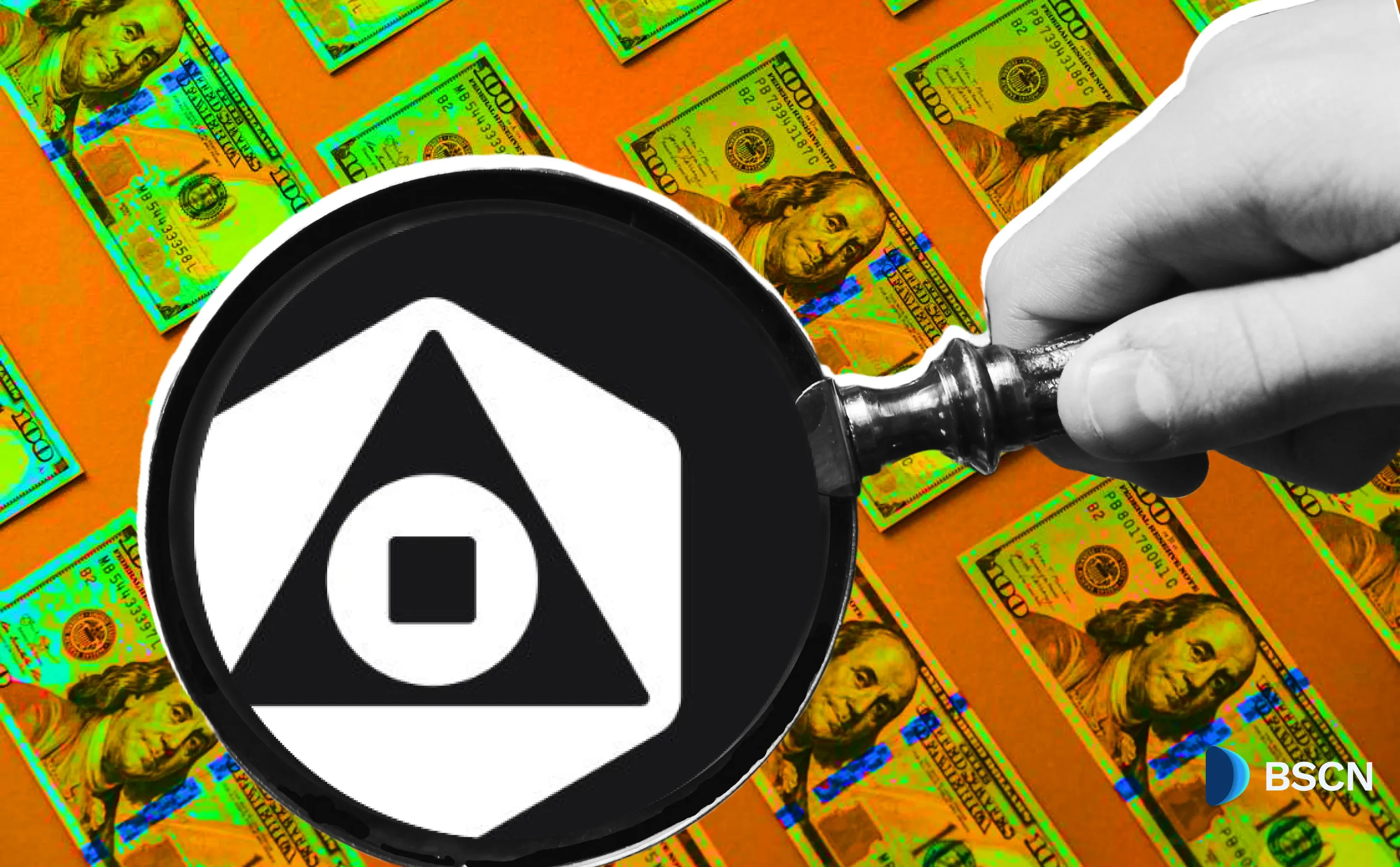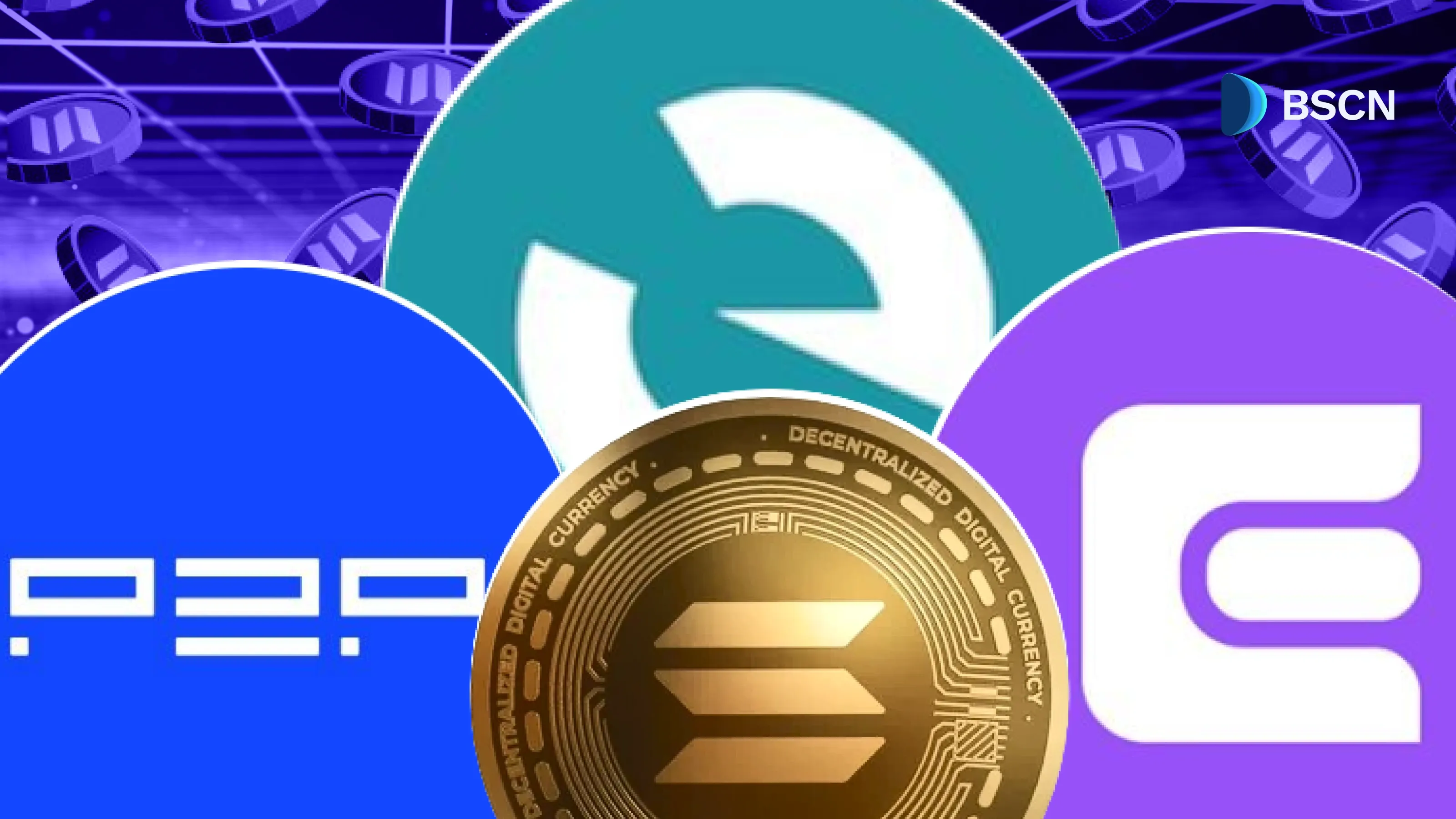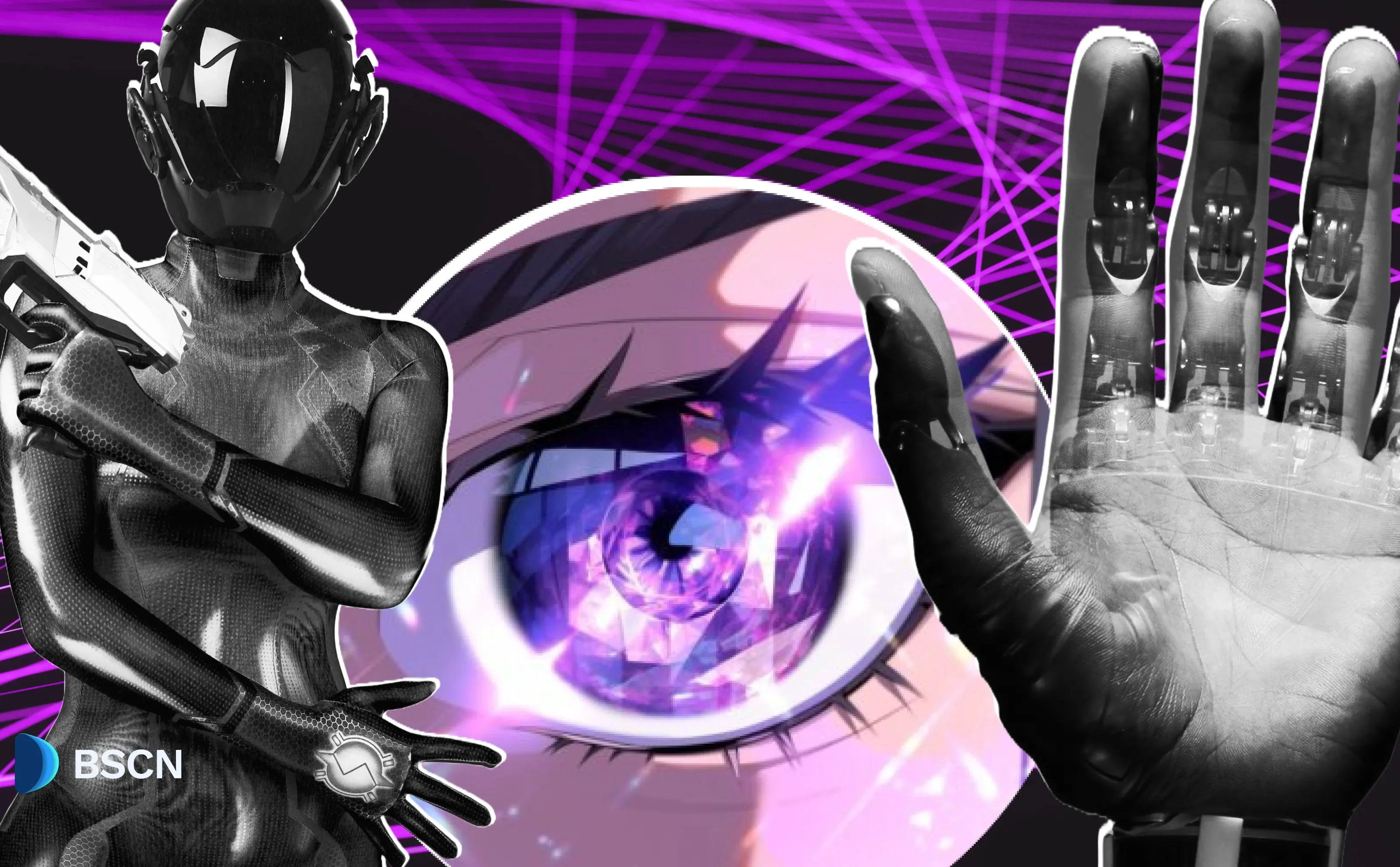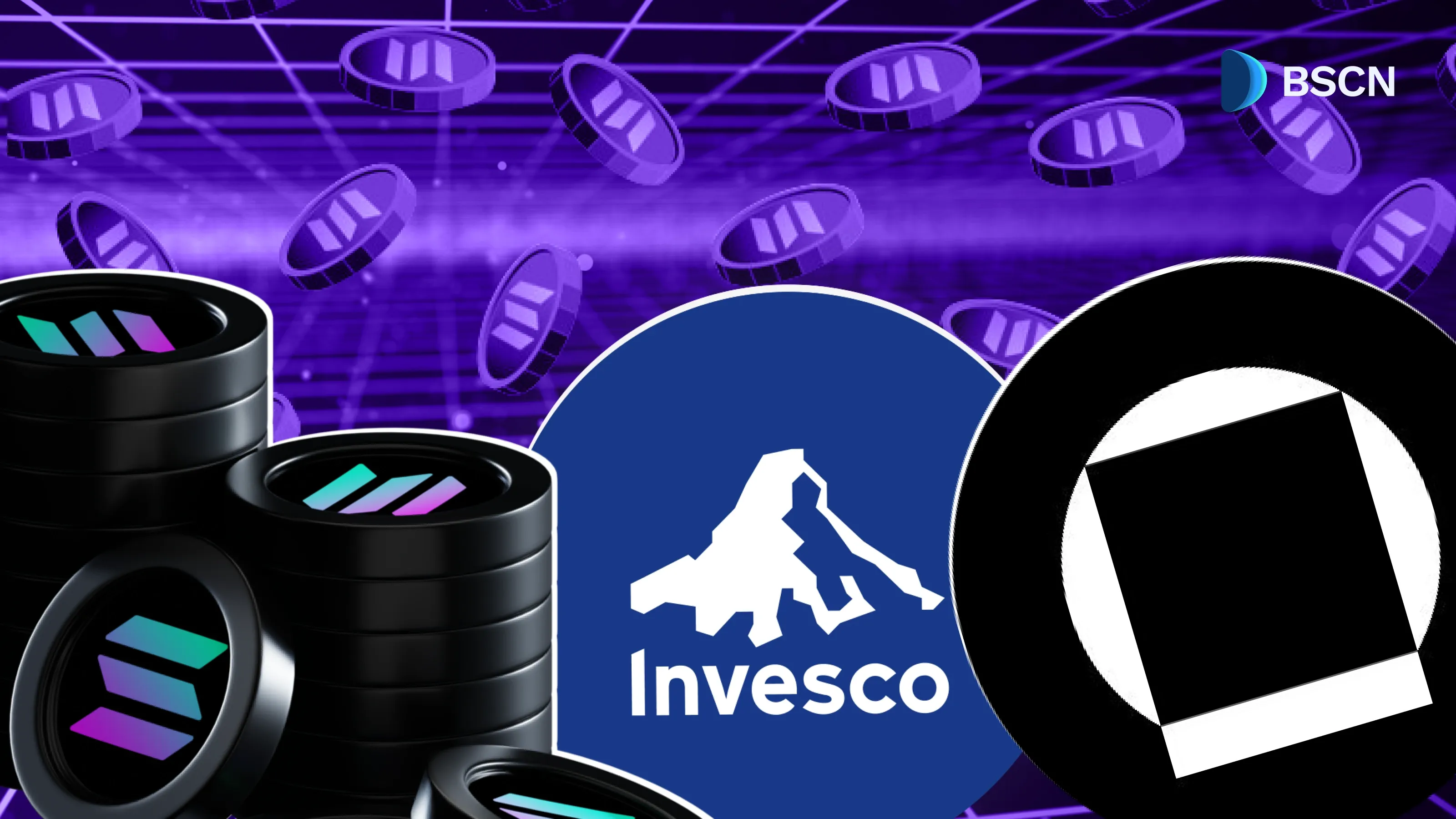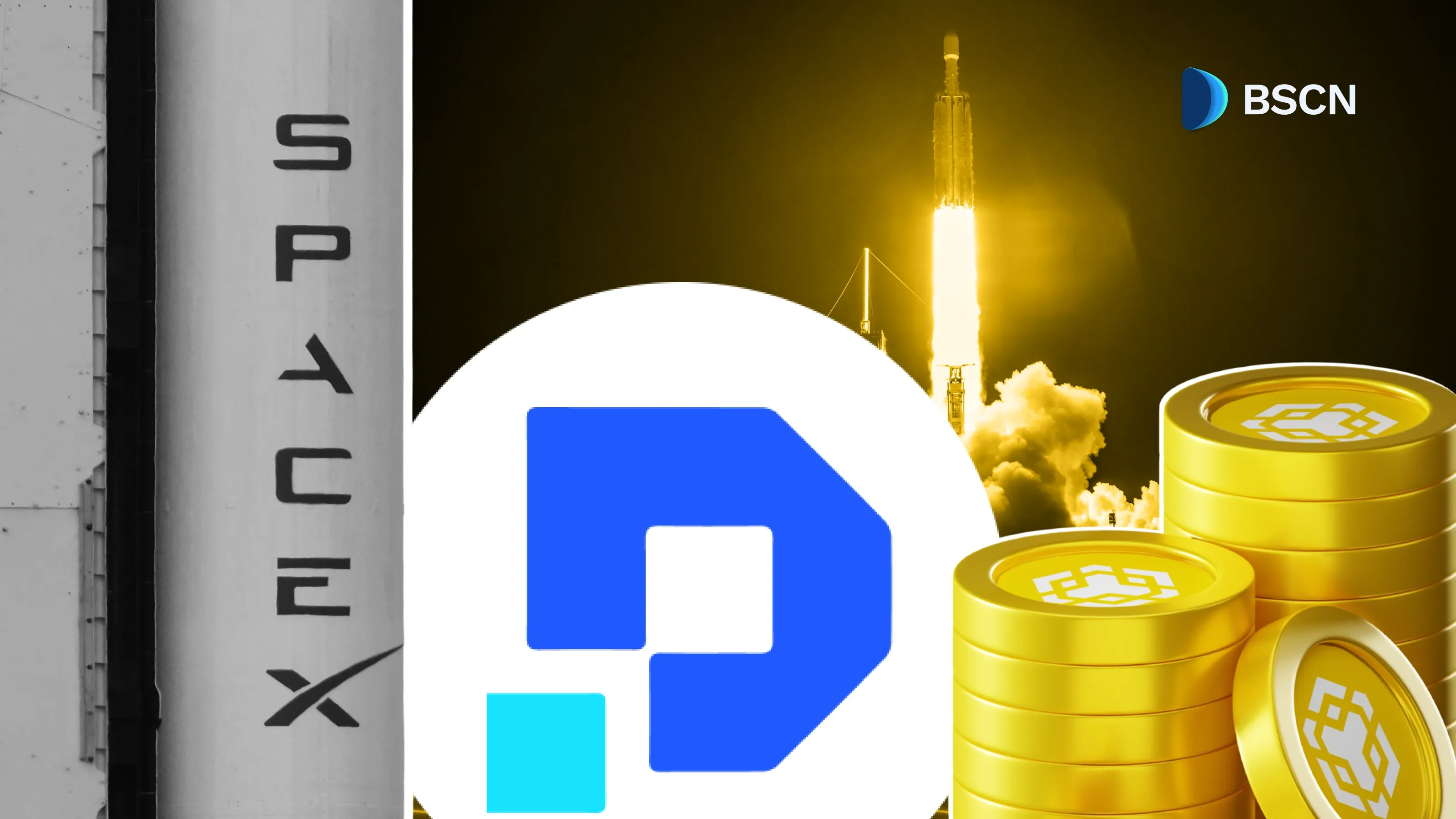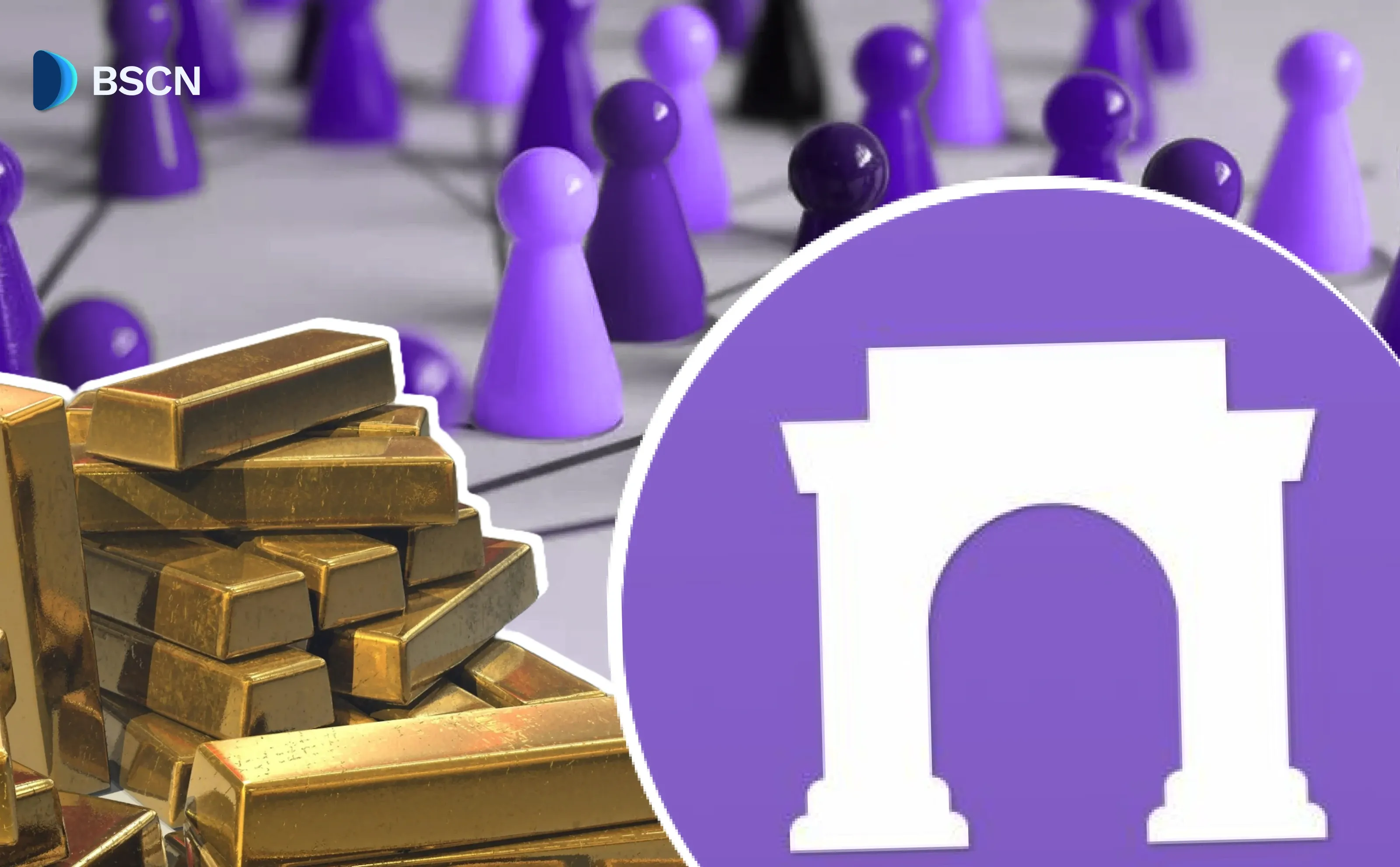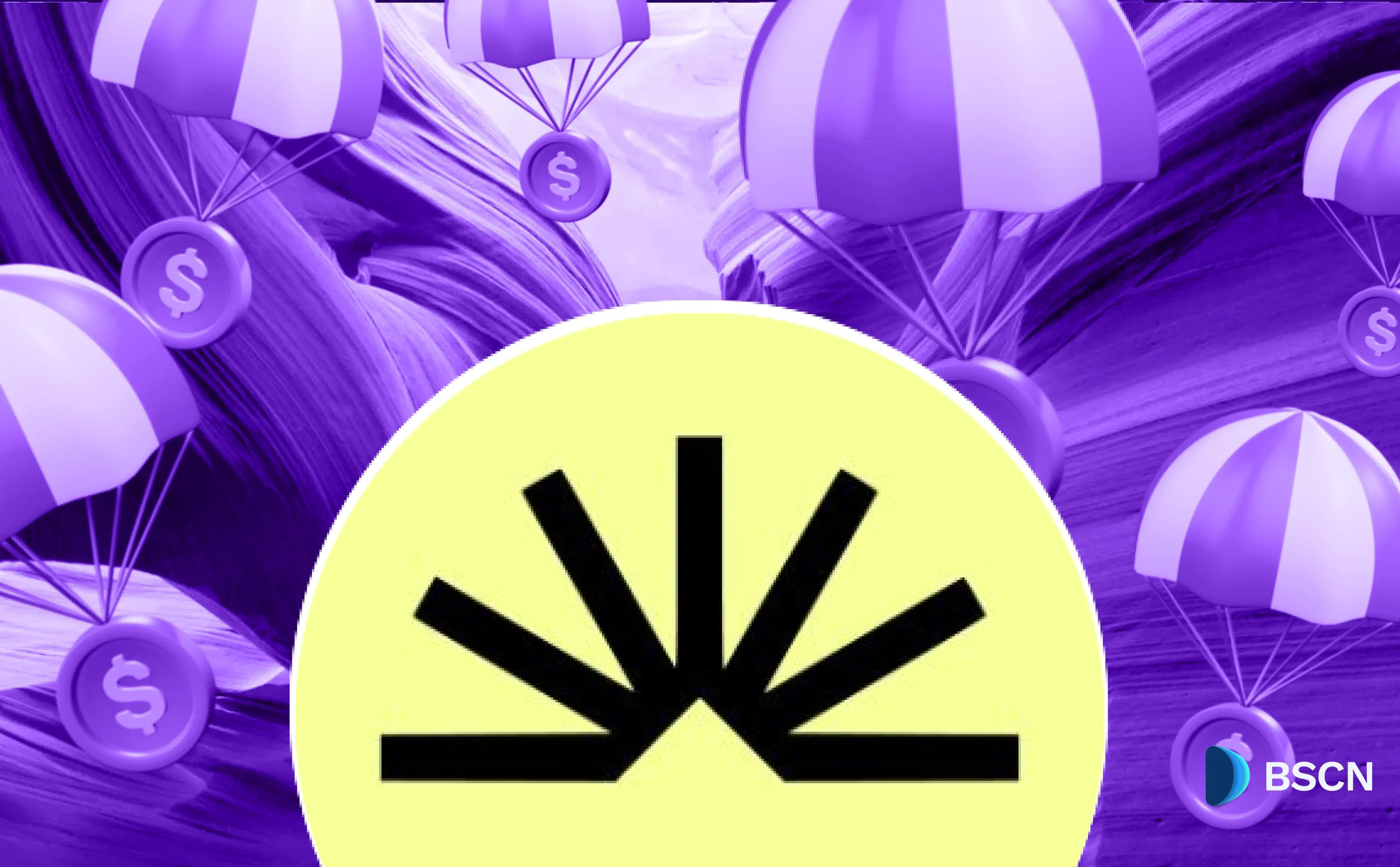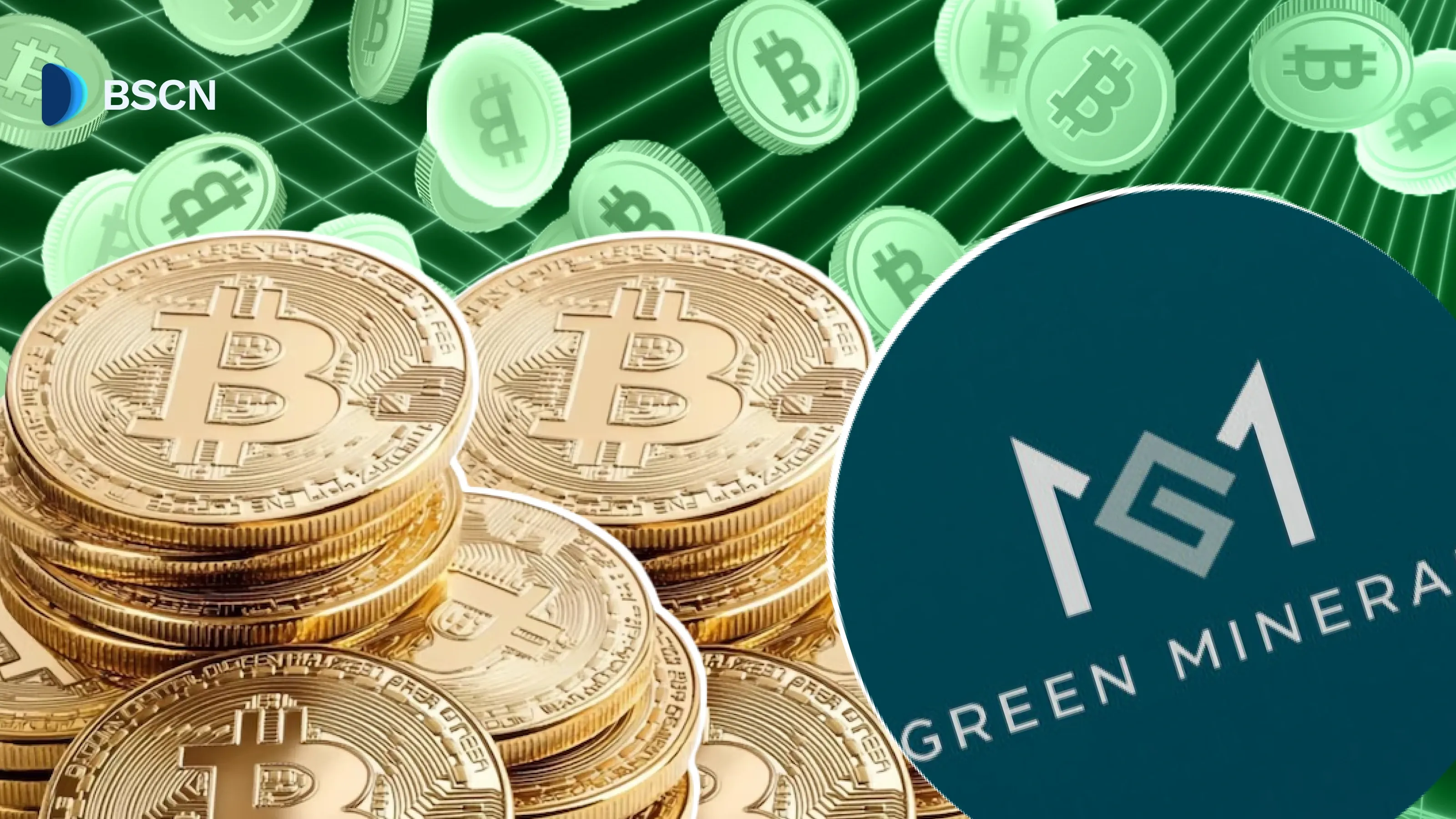BTC
MH Research: Exploring Ordinals Inscriptions & BRC20

Exploring the journey of embedding data in BTC blocks, from Namecoin and Colored Coins to innovative Ordinals and NFT initiatives
Guest Writer: MH Ventures
February 17, 2024
Special thanks to Prasad of the MH Ventures team for submitting this guest article...
History of embedding data in BTC blocks

Using Bitcoin's blockchain for more than just financial transactions has been actively pursued since Bitcoin's early days. One of the initial discussions on theBitcoinTalk.org forums focused on the possibility of developing a DomainName System DNS using Bitcoin, eventually leading to the inception of Namecoin in 2013. As early as 2010, Hal Finney talked about an overlay protocol that adds data to the blocks and can process it, while the original client ignores it.

This era also saw the emergence of the term "Colored Coins," a protocol that would assign specific attributes or uses to portions of Bitcoin UTXOs. These marked UTXOs could then be employed in various off-chain applications.
An early example of exploiting this flexibility was the Counterparty platform,launched in 2014. Counterparty used a multisig transaction hack for embedding data but later shifted to using the OP_RETURN opcode.OP_RETURN outputs are a type of Bitcoin transaction output that is unspendable and allows for a small amount of arbitrary data to be attached. Counterparty uses this to embed data while minimizing blockchain bloat. The presence of arbitrary data in Counterparty outputs, or similar outputs, posedan issue as they were unspendable and added unnecessary load to nodes indifferent to the data or the protocol it served. Initially,
To mitigate this, the OP_RETURN function was standardized in the Bitcoin Corev0.9.0 release in March 2014. OP_RETURN enabled marking an output as unspendable, thereby informing nodes that such outputs could be discarded without tracking them in the UTXO set. This change also introduced a data size limit of 40 bytes in an OP_RETURN output, which was later increased to 80bytes to accommodate larger data sets.
To this day, embedding data into the Bitcoin blockchain using OP_RETURN remains a straightforward process. But OPRETURN provides 80 bytes of space compared to about 4MBs of space when using Ordinals (using Taproot and Segwit).
High-level overview of Ordinals
OP_RETURN and other approaches rely on adding data to the outputs. Ordinalsuse something different. If you look at ordinary metal coins, each one is similar to the other - making them fungible. But physical notes, despite being similar to one another, often have a serial number printed on it and can be non-fungible in some sense. This idea was replicated by Casey in 2023, when he devised away to number each of the SATs that are generated and transferred making them identifiable to a meta protocol that indexes and tracks them.
Once these SATS are traceable, they are inscribed with some data in the transaction while spending them. These inscriptions can be text, images, or even audio files, directly written into the Bitcoin blocks. The Ordinal TheoryHandbook states that "individual satoshis can be inscribed with arbitrary content, creating unique Bitcoin-native digital artifacts that can be held inBitcoin wallets and transferred using Bitcoin transactions. Inscriptions are as durable, immutable, secure, and decentralized as Bitcoin itself."
NFTs on BTC add both metadata and actual content. This means that the blocksize had to be sufficiently large to accommodate this and the transaction data.This became possible due to updates unrelated to this problem.
Technology components
Segwit
SegWit was a major protocol upgrade for Bitcoin in 2017. Its primary goal wasto solve the scalability issues faced by the Bitcoin network, mainly by addressing the block size limit problem.
Regular Bitcoin blocks are composed of 2 types of data - witness data(signature) and transaction data. Before Segwit, they collectively had to fit within 1MBs.
The key innovation of SegWit was the separation of signature data (witness information) from the transaction data within a block. This segregation increased the capacity of each block without needing to increase the physical block size limit. By moving the witness data outside of the main transaction block, SegWit freed up space within each block. Segwit also introduced a new concept called "virtual bytes" to measure transaction size more accurately.This replaced the block size and used weights for calculation. The witness data was given a weight of 1 and the transaction data, a weight of 4. This means that the witness data is discounted by 75%.
This separate data, 75% cheaper than the transaction data, looked lucrative to anyone trying to add arbitrary data to the blocks.
Taproot Upgrade
The Taproot upgrade was activated in November 2021 and was designed toimprove Bitcoinʼs privacy, efficiency, and scalability. It introduced several newfeatures to the Bitcoin protocol, including Schnorr signatures and MerkelizedAbstract Syntax Trees MAST.
Schnorr signatures allowed for more complex Bitcoin transactions to beaggregated and treated as a single transaction. This reduced the amount ofdata needed for each transaction, further optimizing the space within each block.
This meant that collectively Taproot made the transaction data more efficientand low in space, and the Segwit update separated the witness data, making it75% cheaper to add data within it.
How it works in practice
The process of creating inscriptions used to be difficult and required developer experience. Developers had to run, download, and sync the BTC chain, then run an ORD client on top of it, and finally inscribe the data using CLI. However, with the emergence of inscription service providers like OrdinalsBot, the process has become much simpler for average users. These providers offer a user-friendly frontend where users can upload data or select parameters forBRC 20 tokens. They can also specify the BTC address where they want to receive SAT and make the payment using Lightning or other convenient methods.
On the backend, the Bitcoin node runs a software called ORD, developed by Casey Rodarmor, which enables it to add data and metadata to the BTC block in the witness section. Indexing also requires the BTC node to run the ORD client on top.
Inscribing is a 2-step process...
- Numbering the SATS and tracing its ownership
- Adding the data in the witness section using the Taproot script Envelope)
Numbering SATS
Numbering of the Ordinals is done by the ORD clients that sits on top of theBitcoin node. The ORD protocol assigns sequential numbers to the SATS in each block using an algorithm, starting with the Genesis block. Every newly generated SATS, which is created as mining rewards for each block, is numbered in order after accounting for all the SATs that came before. For example, the Genesis block had a reward of 50 BTC, which constituted the first5 billion SATs in the output. In subsequent blocks, the new SATs are numbered based on the rewards for that specific block. For instance, if the block following the genesis block had 1 BTC as its reward, each of the SAT in the rewards would be numbered 4999999 to 5999999.
There are several indexers, such as Ordinals.com, Ordinals Indexer, and BitcoinOracle, that access each BTC block, parse it, and maintain a database of ordinals and their ownership. These indexers track transactions in each block, monitor changes in ownership for each SAT, and update the index accordingly.The index is essentially a large database that stores information about ownership, block ID, and other details for each SAT.
Once the SAT has been numbered and identified, the next step is to add data to it.
Envelope / Adding data to the SAT

An Inscription is typically stored in Bitcoin's "witness data", where a Bitcoin transaction's signatures & public keys reside ("Script Witness"). Inscription gets broken up into small parts so that it can go onto Bitcoin, but we "package"all those parts together in an "envelope". An envelope is the specific data structure that helps indexers like "ord" or OrdinalHub's "gord" identify & readInscriptions.
An envelope helps an indexer look through the witness data on Bitcoin and determine 2 things:
- If an Inscription exists in the witness data
- What data constitutes that Inscription
The content of inscriptions is serialized using data pushes within unexecuted conditionals, also known as "envelopes". These envelopes consist of anOP_FALSE OP_IF ... OP_ENDIF structure, which wraps multiple data pushes. Itis important to note that the BTC node disregards the content that comes after the conditionals OP_FALSE until OP_ENDIF. To accommodate larger-size data, each data push is limited to 520 bytes, requiring the use of multiple pushes.
The token ID of each satoshi is its sequential number, whereas the metadata of an Ordinals NFT is its inscription held within the witness data of a transaction.
Difference between NFTs created using Ordinals and others

NFTs created using Ordinals on Bitcoin are different from those on otherblockchains. Ordinals inscribe data directly onto individual SATS within theBitcoin blockchain, making each NFT an inherent part of the blockchain itself.This eliminates the need for external links or storage. In contrast, most NFTs onplatforms like Ethereum use smart contracts and often rely on external datahosting. This distinction makes Ordinals NFTs more integrated with theblockchain, enhancing their security and permanence. However, Ethereum'ssmart contract capabilities offer more flexibility, enabling complex interactionsand features for NFTs. Bitcoin NFTs have better custody options for institutionsas there is no need for custody of the new standard. New solutions in the BTCNFT ecosystem are also emerging to improve portability and reduce the needfor running full nodes, reducing friction as the traction increases.
Impact on block utilization, fees, and mining rewards
The number of transactions included in the BTC blocks has changed since the introduction of Ordinals and Inscriptions. The average number of transactions per block has increased by almost 50%, thanks to the utilization of Segwit space. Initially, the transactions were primarily focused on financial use cases, while those after January 2023 now include text/image-based inscription transactions.

The chart below shows how people have been using different types of ordinals. Ever since the BRC20 standard was introduced, it has been the most popular choice for inscriptions, surpassing all other formats of NFTs. This indicates a strong demand for BRC20 tokens compared to other types of NFTs.

Distribution of ordinals by data type
In terms of the total number of inscriptions, when there are more text-based inscriptions BRC20 tokens), they take up a relatively smaller block size compared to image-based inscriptions. This is because the data size of BRC20 inscriptions is 20% larger compared to 4045% for image-related inscriptions. So, we can say that BRC20 inscriptions don't take over the blockspace for financial transactions but rather occupy the unused space in the block.

The folks who use pictures or words to label things usually aren't keen onshelling out big bucks. Captions on images take up more space, while BRC20labels that use text take up less space but there are more of them. Miners havebeen making a solid 20% cut from these labels.

The starting price for an inscription can range from 12 sats/ vbyte to more than 50 sats/ vbyte. Looking at the data, we can see that the fees initially started at 12 sats/ vbyte and gradually went up, settling in the 1020 sats/vbyte range. This could be the standard fee for inscriptions that miners can expect in the long run. When compared to financial transactions, inscriptions are not time-sensitive and users usually don't mind waiting for a few blocks.Inscription demand at 1020 sats/ vbyte represents the buyers who are willing to take up any leftover space in each block. This means miners can enjoy a solid 20% increase in revenue.

Ordinals ecosystem
The Bitcoin Ordinals ecosystem has experienced significant growth since its inception in January 2023, with the introduction of the Ordinals protocol marking a revolutionary step by enabling unique identification and inscription of data onto Bitcoin's SATS. The emergence of collections like "Ordinal Punks"soon after showcased the demand for these digital artifacts, sparking interest and investment. Infrastructure growth followed, with marketplaces, wallets, and data analytics tools such as Ordinals Wallet and Ordinal Hub emerging to support trading, management, and insight into the burgeoning market. DeFi applications and services that simplify the inscription process have further expanded the ecosystem, making it more accessible and functional for a broader user base.

- Marketplaces Platforms like Open Ordex and Magic Eden on Bitcoin which facilitate the buying and selling of Ordinals. These marketplaces can generate revenue through transaction fees and premium listing services.Given their central role in the trading of digital artifacts, marketplaces have the potential for high volume and, consequently, high revenue.
- Wallets Dedicated wallets for managing and transacting Ordinals, such as XVerse and Hiro Wallet, are fundamental to the ecosystem. They monetize through transaction fees, premium services, and partnerships. The growth of the underlying asset class typically drives wallet adoption, offering a scalable business model.
- Data & Analytics Services Tools like Ordinal Hub that provide analytics and tracking capabilities for Ordinals are valuable for traders and collectors. These platforms monetize through subscription models for advanced features, data access, and analytics.
- DeFi Applications As the ecosystem matures, DeFi platforms like OrdinalsFinance that build financial applications on Bitcoin can harness the security of the blockchain for novel financial products. These platforms can introduce service fees, staking rewards, and other financial instruments as revenue streams.
- Inscription and Infrastructure Services Services that simplify the inscription process or provide infrastructure support to the Ordinals ecosystem, such as Ordinals Bot and Ordswap, can attract investment due to their fundamental role in user onboarding and engagement.
- Explorers: Explorers like Ord.io and Ordinals Hub provide tools to search, browse, and analyze Ordinal Inscriptions. They offer transparency and tracking capabilities, which are crucial for verifying the authenticity and history of Ordinals.
- High-Profile Collections Similar to the early days of NFTs on Ethereum, certain high-profile collections like "Ordinal Punks" attract attention from investors. The perceived cultural value and potential for significant appreciation make them attractive, albeit riskier, investment targets.
BRC20 and other standards
The first and most popular BRC20 token is ORDI, which started as a meme but now has a market cap of over $1 Billion. Other BRC20 tokens include VMPX,MEME, BANKBRC, and PEPEBRC, which have been listed on Gate.io, the first exchange to support BRC20 trading. Now there are over 75k BRC20 tokens.
The first token contract to be deployed was for the $ORDI token with a limit of 1K tokens per mint and 21M max supply (in an homage to Bitcoinʼs max supply).The launch created some buzz in a sub-sector of the Bitcoin community, and in less than a day, all 21M $ORDI tokens had been minted.
Comparison to Ordinals in terms of number of transactions and fees
The total number of BRC20 transactions has reached a whopping 42 million, while non-BRC20 transactions are only at 6.5 million. The fees paid for BRC20 transactions also speak volumes - a staggering 3500 BTC, compared to a mere 700 BTC for non-BRC20 transactions.

BRC20 tokens started on March 9, a pseudonymous Crypto Twitter user named @domo posted a thread theorizing a method called BRC20 that could create a fungible token standard on top of the Ordinals protocol.

In essence, the method was about inscribing text onto sats to create fungible tokens. The initial design only allowed for three different operations: deploying, minting, and transferring. The functions used to launch, mint, and transfer BRC20 tokens are essentially JSON objects. They are text that have to be inscribed on the SATS.


Transferring BRC20 tokens requires 2 steps -
Step 1 The transfer function should be inscribed to the SAT that is held by the user who wants to send
Step 2 The SAT containing the transfer inscription is sent
Around 40M BRC20 tokens have been minted so far in three separate periods as we can see from the charts.

There are over 75k BRC20 tokens, as any user can create their own byinscribing SATS. This process is not so different from the ICO boom of 2017.



New Innovations

Runes
Runes are designed to be simpler and more efficient than BRC20 tokens.They are also fungible tokens issued directly on Bitcoin using the Runes protocol. The creator of Ordinals, Casey Rodarmor, proposed Runes with the intent to address some of the issues associated with BRC20, such as the excessive production of "junk" UTXOs that could potentially clog the network. Runes aims to streamline the token issuance process on Bitcoin by using a UTXO-based protocol that avoids the generation of these unwanted UTXOs. In contrast to other fungible token protocols for Bitcoin, Runes do not require off-chain data or a native token to operate, and they use the OP_RETURN function to store data on the blockchain,differentiating from how Ordinals and BRC20 tokens operate.
Recursive inscriptions
Recursive inscriptions work by referencing data from existing inscriptions, allowing for the creation of new inscriptions without having to upload all the original data again. This means that larger and more complex data structures can be stored on-chain, as new inscriptions can "call" data from pre-existing ones, daisy-chaining information together to form comprehensive files. This allows for significant savings on block space and potentially reduces transaction fees because only incremental data needs to be added to the blockchain.
The benefits of recursive inscriptions include greater efficiency in storing large files, the potential to represent data beyond the 4MB limit, the creation of new types of on-chain software, and cost savings in transaction fees. They can also introduce more complex functionalities like smart contracts to Bitcoin.
Projects like OnChainMonkey have already utilized recursive inscriptions to create more complex digital artifacts, like 3D NFT art on Bitcoin
PIPE protocol
The PIPE protocol is a method for creating and managing assets on theBitcoin network. It was developed by Benny, who was inspired by Casey'sRunes protocol and Domo's BRC20 standard.
One of the main features of the PIPE protocol is its ability to support both fungible and non-fungible tokens on the Bitcoin network. This means that users can create and trade unique digital assets, such as art or collectibles, as well as more traditional tokens, like cryptocurrencies or utility tokens.
The PIPE protocol is based on the concept of responsible UTXO management. This ensures that the Bitcoin blockchain remains efficient while allowing users to create and manage their digital assets. This is achieved through a process called "token-controlled access," which gives users control over who can access their digital assets and how they can be used.
Taproot Assets Protocol
Taproot Assets offers the capability to create various types of assets on the Bitcoin network, ranging from collectibles to regular, fungible assets.Essentially, there are no constraints on what these assets can symbolize –they could be anything from stablecoins and company shares to event tickets, ownership rights, or even art.
Here are some potential use cases that Taproot Assets bring: Introduce stablecoins, a primary focus of Lightning labs
Enable asynchronous receipt & multi-recipient transactions
Facilitate Bitcoin DeFi applications with the Lightning Network
Manage ERC721 and ERC1155 assets without storing metadata on-chain.
Inscriptions in other ecosystems
Inscription events have recently put a lot of strain on almost every chain, causing some networks to experience outages and significant spikes in transaction fees.

Arbitrum
On 15th December, the Arbitrum sequencer experienced an hour and a half of downtime. This was due to a large number of users spamming the L2with 'mint' transactions to acquire the FAIR20 inscriptions token. The recent surge in inscriptions on Arbitrum resulted in a significant increase in network transactions, reaching 5.1M in a single day. The number of inscription transactions was more than 10 times higher compared to non-inscription transactions. During the past 24 hours, the Arbitrum L2Sequencer Inbox contract burned the highest amount of ETH, totalling 795.7 ETH. The Arbitrum team confirmed that the sustained surge of inscriptions caused the sequencer to stop relaying transactions properly.Since then, the network has returned to normal.
zksync
On December 16, an inscription event on zkSync Era caused a large increase in transactions over 38 hours. For nearly 14 hours straight, the network handled 150 TPS peaking at 187 TPS with an average TXcost of $0.12. One of the systemʼs primary databases was configured with fewer total connections than needed during prolonged 150 TPS. This led to 15 minutes of downtime, which was fixed immediately once the team re-started the database. The block explorer couldnʼt keep up at 150 TPS and many users took this as a sign that the network was delayed, even though that wasnʼt the case and transactions were continuing to go through - the explorer was just slow to index them
Avalanche

In Avalanche, new inscriptions are the ASC20 tokens like $BEEG $dino$QQ $AVAV $AVAST. The total ASC20 Market Cap stood at around $70M.Avalanche CChain Gas spent more than $20 million in the past seven days. In the past 7d, inscription activity accounted for 72.3% of the gas consumption and 86.5% of the transactions on the Avalanche CChain. Gas fees briefly spiked past 5,000 nAVAX $4.5 when Trade Joe co-founder released BEEG inscription minting. But overall the AVAX chain turned deflationary for a couple of days, burning more fees than the emissions.
Solana
Metaplex, the marketplace for NFTs on Solana has launched Metaplex Inscriptions and Engravings, a new standard for fully on-chain and immutable digital assets on Solana. Metaplex Inscriptions allow you to store an assetʼs metadata and media fully on Solana, removing any external trust assumptions and unlocking greater composability for on-chain attributes and smart contracts. $sols has recently become the top NFT collection on Solana, surpassing other competitors in market cap. Sols-SPL20 was a fully public and freely available minting event. It took approximately 4hours to sell out. Now, it holds the top position among Solana's NFTs.
Conclusions
- Network Stress and Scalability Challenges The rise in inscription activities has tested the scalability and robustness of blockchain networks.For example, the Arbitrum network experienced significant downtime due to a surge in transactions for FAIR20 inscriptions. This highlights the need for ongoing development in blockchain infrastructure to handle evolving use cases and transaction volumes.
- Technical Advancements Enabling New Capabilities Advances such as SegWit and the Taproot upgrade have been pivotal in enabling these new uses of Bitcoin. SegWit's separation of signature data from transaction data and Taproot's introduction of Schnorr signatures and MAST have collectively enhanced Bitcoin's efficiency and scalability. These improvements have made it feasible to incorporate larger and more complex data sets onto the blockchain.
- Economic Implications for Miners and Users The rise in inscription andBRC20 transactions has economic implications, particularly for miners.The increase in transactions has led to higher mining fees, benefiting miners. For users, the cost of inscriptions varies, but there's a trend toward standardization of fees for such transactions.
- Emergence of a Diverse Ecosystem The introduction of these new capabilities has spurred the growth of a diverse ecosystem around Bitcoin.This ecosystem includes marketplaces for trading digital artifacts, dedicated wallets, data analytics services, and DeFi applications. These developments enhance the functionality and accessibility of Bitcoin for a broader range of uses.
- Comparison with Established Token Standards Compared to more established token standards on blockchains like Ethereum, BRC20 tokens may lack features and flexibility. This might lead to a demand for more sophisticated token standards on Bitcoin that can offer a wider range of functionalities and use cases. Many BRC20 tokens lack intrinsic value or utility, existing more as novelties or digital collectibles. Without practical use cases or underlying value, the long-term viability of these tokens is questionable.
Disclaimer
Disclaimer: The views expressed in this article do not necessarily represent the views of BSCN. The information provided in this article is for educational and entertainment purposes only and should not be construed as investment advice, or advice of any kind. BSCN assumes no responsibility for any investment decisions made based on the information provided in this article. If you believe that the article should be amended, please reach out to the BSCN team by emailing [email protected].
Author

Guest Writer: MH Ventures
MH Ventures is a boutique, full-service venture capital fund investing in disruptive technologies in the blockchain sector, across pre-seed to series A. MH Ventures’ research team conduct and publish blockchain articles and research pieces, spanning foundational blockchain architecture, through to industry leading market insights. Its portfolio is more than 60-strong and features high-profile organizations such as Sei Network, Celestia, and Fuel Network.
Latest News
Crypto Project & Token Reviews
Project & Token Reviews
Comprehensive reviews of crypto's most interesting projects and assets
Learn about the hottest projects & tokens
Latest Crypto News
Get up to date with the latest crypto news stories and events

